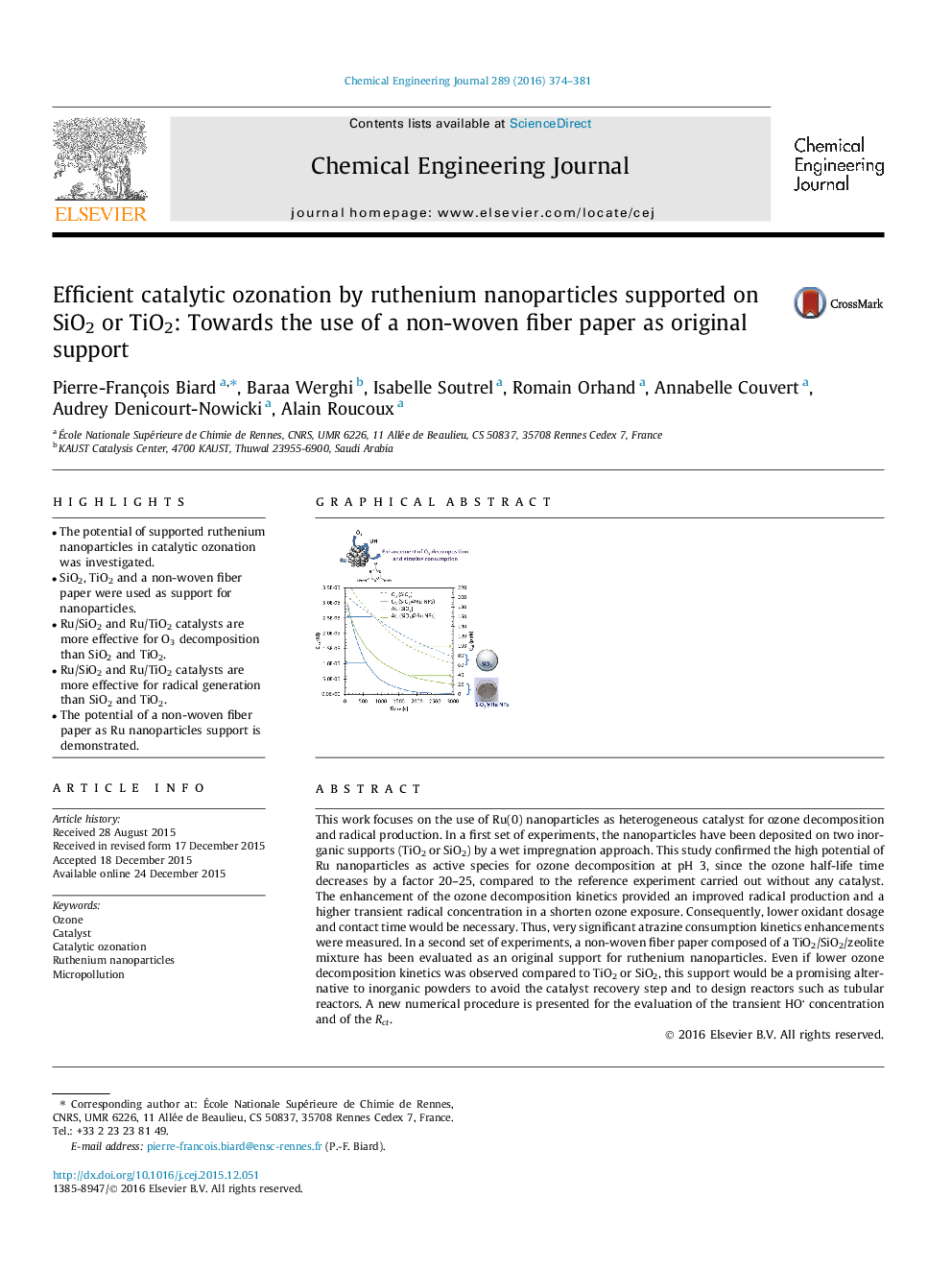| کد مقاله | کد نشریه | سال انتشار | مقاله انگلیسی | نسخه تمام متن |
|---|---|---|---|---|
| 145828 | 456352 | 2016 | 8 صفحه PDF | دانلود رایگان |

• The potential of supported ruthenium nanoparticles in catalytic ozonation was investigated.
• SiO2, TiO2 and a non-woven fiber paper were used as support for nanoparticles.
• Ru/SiO2 and Ru/TiO2 catalysts are more effective for O3 decomposition than SiO2 and TiO2.
• Ru/SiO2 and Ru/TiO2 catalysts are more effective for radical generation than SiO2 and TiO2.
• The potential of a non-woven fiber paper as Ru nanoparticles support is demonstrated.
This work focuses on the use of Ru(0) nanoparticles as heterogeneous catalyst for ozone decomposition and radical production. In a first set of experiments, the nanoparticles have been deposited on two inorganic supports (TiO2 or SiO2) by a wet impregnation approach. This study confirmed the high potential of Ru nanoparticles as active species for ozone decomposition at pH 3, since the ozone half-life time decreases by a factor 20–25, compared to the reference experiment carried out without any catalyst. The enhancement of the ozone decomposition kinetics provided an improved radical production and a higher transient radical concentration in a shorten ozone exposure. Consequently, lower oxidant dosage and contact time would be necessary. Thus, very significant atrazine consumption kinetics enhancements were measured. In a second set of experiments, a non-woven fiber paper composed of a TiO2/SiO2/zeolite mixture has been evaluated as an original support for ruthenium nanoparticles. Even if lower ozone decomposition kinetics was observed compared to TiO2 or SiO2, this support would be a promising alternative to inorganic powders to avoid the catalyst recovery step and to design reactors such as tubular reactors. A new numerical procedure is presented for the evaluation of the transient HO concentration and of the Rct.
Figure optionsDownload as PowerPoint slide
Journal: Chemical Engineering Journal - Volume 289, 1 April 2016, Pages 374–381